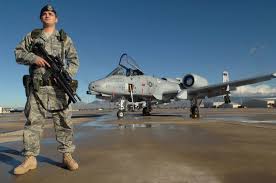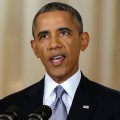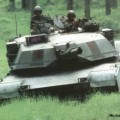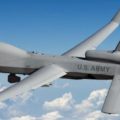U.S. Military Technology Edge Fading
Frank V. Vernuccio, Jr., JD
The world has noticed that America’s stripped defense budgets have allowed potentially hostile nations to gain the lead in cutting-edge weaponry that could decide the fate of a future conflict.
The Institute for Strategic Studies latest report on The Military Balance notes that the U.S. technological military edge is being lost to China, Russia, and other nations.
While China and others have surged ahead, the U.S., with a defense budget that has been sharply diminished under the Obama presidency, hasn’t kept pace.
In a key Pentagon analysis, Frank Kendall Undersecretary of Defense for acquisition, technology and logistics states that “my concern [is] that in some areas we may not be pushing the state-of-the-art enough in terms of technical performance. This endangers our military technical superiority. In my view, our new product pipeline is not as robust as it should be at a time when our technological superiority is being seriously challenged by potential adversaries. Not all cost growth is bad; we need to respond to changing and emerging threats.”
During the Obama Administration, the low levels of system development and demonstration funding have dropped so precipitously that the Department of Defense has expressed concern that America could fall behind its rivals in advanced weaponry on land, sea, and air.
 Weapons systems are not developed quickly, sometimes taking well over a decade to go from a concept based on a necessary response to a threat, to an actual usable plane, ship, tank or other weapon. The decisions made this year will have an effect on American national security decades into the future. A U.S. Air Force study recently released noted that “Emerging integrated and networked air-to-air, surface-to-air, space and cyberspace threats, as well as aging and shrinking fleets of US weapon systems, threaten the Air Force’s ability to provide air superiority at the times and places required in the highly contested operational environments of 2030 and beyond… The Air Force’s projected force structure in 2030 is not capable of fighting and winning against this array of potential adversary capabilities.”
Weapons systems are not developed quickly, sometimes taking well over a decade to go from a concept based on a necessary response to a threat, to an actual usable plane, ship, tank or other weapon. The decisions made this year will have an effect on American national security decades into the future. A U.S. Air Force study recently released noted that “Emerging integrated and networked air-to-air, surface-to-air, space and cyberspace threats, as well as aging and shrinking fleets of US weapon systems, threaten the Air Force’s ability to provide air superiority at the times and places required in the highly contested operational environments of 2030 and beyond… The Air Force’s projected force structure in 2030 is not capable of fighting and winning against this array of potential adversary capabilities.”
Real Clear Defense describes how having advanced weaponry allowed the U.S. to win the Cold War: “For some 70 years, the United States has relied on its competitive advantage in finding, developing and fielding advanced military technologies to counterbalance adversaries’ and enemies’ advantages in quantities of forces, proximity to the battle space, local geography and ideological fervor… For many decades, advances in technology allowed the U.S. military to increase the effectiveness of individual weapons, platforms and even combatants, literally allowing it to do more with less. The wisdom of this approach was demonstrated in the demise of the former Soviet Union…starting with the end of the Cold War, successive Administrations took a modernization holiday while at the same time reducing the overall size of the U.S. military, i.e., its capacity. Now an even more serious problem looms on the horizon. The era of U.S. competitive advantage in advanced technologies with military applications may be coming to an end. Senior Pentagon officials having been running around town with their hair on fire about this problem. Simply put, we are losing our technological edge.”
The worrisome commentary is not restricted to political or military journals.
A Popular Mechanics article outlined how “Declining defense budgets in both the United States and the rest of NATO have slimmed down the active armed forces and cut research and development into future military technologies. According to the Guardian, since 1991 the British Royal Air Force and French Air Force have both had their aircraft inventories cut by more than 50 percent. The newspaper also reports that since 2001, the number of battalions in the largest NATO countries and U.S. forces in Europe have fallen by more than two-thirds, from 649 to 185.”
The Economist reports that “America’s ability to project power on behalf of its own interests and in defence of its allies has been the bedrock of the rules-based international order since the end of the second world war. Critical to that effort has been the role of technology in maintaining a military edge over potential adversaries through the first and second “offset strategies…China has been busy developing asymmetric capabilities specifically designed to counter America’s power in the West Pacific. For over two decades it’s been investing double-digit defence budgets in an arsenal of highly-accurate, submarines, sophisticated integrated air defence systems (IADS) and advanced cyber capabilities. All with the aim of making it too dangerous for American carriers to operate close enough to fly their tactical aircraft or cruise missiles.”
Writing in the National Interest, Representative J. Randy Forbes,(R-VA) Chairman of the Seapower and Projection Forces Subcommittee of the House Armed Services Committee, and Elbridge Colby, the Robert M. Gates Fellow at the Center for a New American Security, urge that the problem be understood and responded to:
“America’s edge in military technology and the balance of military power in the Asia-Pacific writ large is under serious and growing pressure from China’s military-modernization efforts. Admiral Samuel Locklear, head of the Hawaii-based U.S. Pacific Command, observed at a conference in January that “our historic dominance…is diminishing… …we…find ourselves at this juncture through a combination of a foolishly constricting approaches to defense planning manifested by five years of defense cuts, including sequestration; a two-decade sanguinity about the true challenge to our military edge posed by China’s impressive military modernization; and, a refusal to ensure that our capabilities within the U.S. defense portfolio are militarily sufficient in quantity and diversity to maintain asymmetric superiority for full-spectrum warfare. Together, this lack of focus and indiscipline has helped allow countries like China to begin materially closing the once-yawning gap in military capability…The unfortunate fact is that American defense spending, investment, and procurement do not adequately reflect a focus on maintaining our upper hand against the most serious, technologically challenging competitors. … we will need to make focused and sustained investments…”
Frank V. Vernuccio, Jr., J.D. is the editor-in-chief of the New York Analysis of Policy & Government and the co-host of the popular WVOX weekly radio show, “And Nothing But The Truth.”

















Follow Us